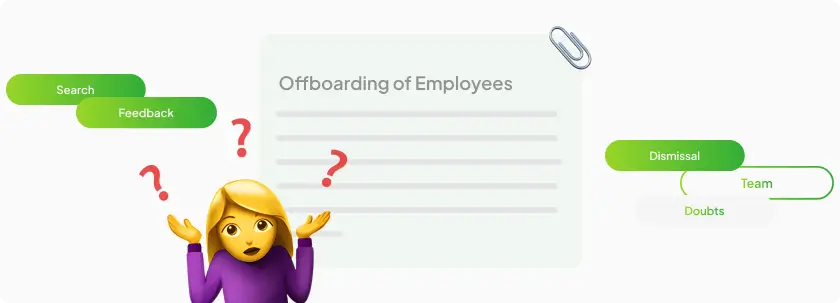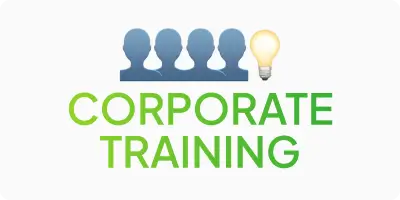
Onboarding is not just about firing an employee. It is a whole art of how to properly and loyally part ways with an employee so that everyone wins and there are no negative consequences.
What is onboarding?
Onboarding is the process of supporting an employee during his or her dismissal or departure from the company. It includes all the actions and procedures necessary for a smooth and correct exit of an employee from the organization. Onboarding is an important part of HR management that affects the company’s reputation, knowledge retention, and team morale. When an employee is dismissed in a haphazard manner, it can negatively affect other people’s feelings, affect their performance, and cause negative emotions in the dismissed employee. It also significantly affects the reputation of the company.
What are the main stages of onboarding or how to fire an employee correctly?
Onboarding includes several points that allow you to leave the company correctly and professionally. Let’s take a closer look at each of them:
- Announcement of resignation:
- Informing the management: The first step in the offboarding procedure is to inform the management about the employee’s dismissal. This can be an initiative of the employee or a decision of the company.
- Notifying the team: Informing the team about the departure of a colleague is important to prepare for this departure and redistribute responsibilities. This reduces stress, helps the employer prevent burnout among their employees, increases transparency in the process, and prepares the team for change.
- Planning and preparation:
- Developing an exit plan: After the announcement of the departure, a detailed exit plan is developed that includes all the main steps for the transfer of responsibilities and completion of current tasks.
- Collaboration with HR and Legal: Involvement of HR and Legal to ensure that all procedures are compliant and correct according to the law and the company’s internal policies.
- Feedback:
- Exit interview: it is necessary to provide an opportunity for the employee to share their impressions of working in the company, make suggestions for improving working conditions and identify possible problems. This is done to improve working conditions for other employees. When a person leaves, he or she can safely express his or her opinion about the company and will not be affected by anything.
- Feedback analysis: The collected data should be analyzed and possible growth areas should be identified to improve the company and HR management.
- Transfer of information:
- Process documentation: creating and transferring detailed documentation describing the main processes, projects, and responsibilities of the employee.
- Successor training: training a new employee and transferring information to improve the employee’s adaptation. As a result, this employee will perform the duties of the dismissed employee.
- Corporate memory retention: Using internal knowledge management systems to store and access important information.
- Legal and administrative procedures:
- Preparation and signing of documents: Preparation of all necessary legal documents, including the severance agreement, settlement documents, and other necessary papers.
- Revocation of access: It is also necessary to ensure that all employee access to corporate systems, including e-mail, databases, internal portals and other resources, is revoked. This is necessary to ensure the employee’s safe dismissal and prevent further problems and suspicions on the part of the company.
- Return of property: return of all tangible things belonging to the company (computers, phones, keys, passes, etc.)
- Support for the employee after dismissal:
- Recommendations and support: providing recommendations for a new employer, assistance in finding a new job, and support for the employee during the transition to a new organization.
- Access to resources: Some companies also provide access to certain corporate resources, such as a network of contacts or educational materials, even after the job is over. This is not often done, but it has a very good effect on the company’s reputation.
Each stage of onboarding is important and plays a significant role in ensuring that an employee leaves the company in a proper and professional manner. This allows you to retain knowledge in the company, minimize risks and maintain a positive company image. This is important not only for the departing employee, but also for the entire team, future employees, and the company.
Why is offboarding important?

- Knowledge retention: helps to preserve important information and experience gained by an employee, which ensures the continuity of processes within the company. This is very important when dismissing an employee so that their tasks are smoothly transferred to another person.
- Maintaining the company’s reputation: correct onboarding has a positive impact on the company’s reputation among employees and in the labor market, showing that the company values its employees even when they want to leave their jobs.
- Motivation and engagement of employees: improves morale and engagement of those who stayed with the company. When people are fired for no reason, on the same day, and not even cared about their comfort, it will cause negative emotions and stress for those who continue to work for the company. It also negatively affects the quality of their work.
- Minimizing risks: helps to avoid possible legal and financial risks by properly formalizing dismissal and protecting confidential information.
The role of technology in onboarding
Modern technologies play an important role in the off-boarding process and facilitate the management of this process. Let’s take a look at how technology affects the onboarding process:
- Process automation:
- Checklists and workflows: The use of software tools, such as an HRMS (human resources management system), to create and manage checklists and other workflows. This helps ensure that all necessary steps are completed and nothing is missed.
- Automated notifications: Systems can automatically send messages to responsible parties regarding tasks related to an employee’s termination.
- Tools for knowledge transfer:
- Knowledge Management Systems (KMS): These platforms help to preserve important information that is critical when transferring responsibilities from one employee to another. This can be instructions, documents, videos, or meeting recordings.
- Collaboration platforms: Tools such as Slack, Microsoft Teams, or Asana allow for team collaboration and easy access to information.
- Access control security:
- Identity and access management (IAM) systems: These systems allow you to automatically disable an employee’s access to corporate systems and resources after they leave, ensuring the protection of confidential information.
- Data encryption: The use of encryption technologies to protect data during transmission and storage. This can ensure that sensitive information remains protected even after an employee leaves.
- Feedback and data analysis:
- Questionnaires and surveys: Using online surveys to collect information from the departing employee more quickly. This helps to understand the reasons for their departure and find ways to improve work processes.
- Data analysis: analytics tools can be used to analyze the collected data and identify problems in the onboarding process.
- Social media and contact management:
- Networking platforms: Using professional social networks such as LinkedIn to keep in touch with former employees. This can be useful for future collaboration or recruiting.
Technology can greatly simplify the onboarding process and improve its quality. They help to automate routine tasks, store and transfer knowledge, protect confidential information, and maintain feedback.
Conclusion
Onboarding is an integral part of the employee life cycle that plays a very important role in the overall atmosphere within the company. An effective onboarding process helps to maintain positive relationships with employees, even after they leave, as well as to ensure stable work processes and protection of confidential information.
The right approach to onboarding includes several key steps, such as exit planning, exit interviews, knowledge transfer, and managing access to corporate resources.
Effective offboarding not only helps reduce stress for employees and the team, but also helps the company maintain its reputation as a responsible employer. If you decide to dismiss your employee or he or she has expressed such a desire, do it right!












